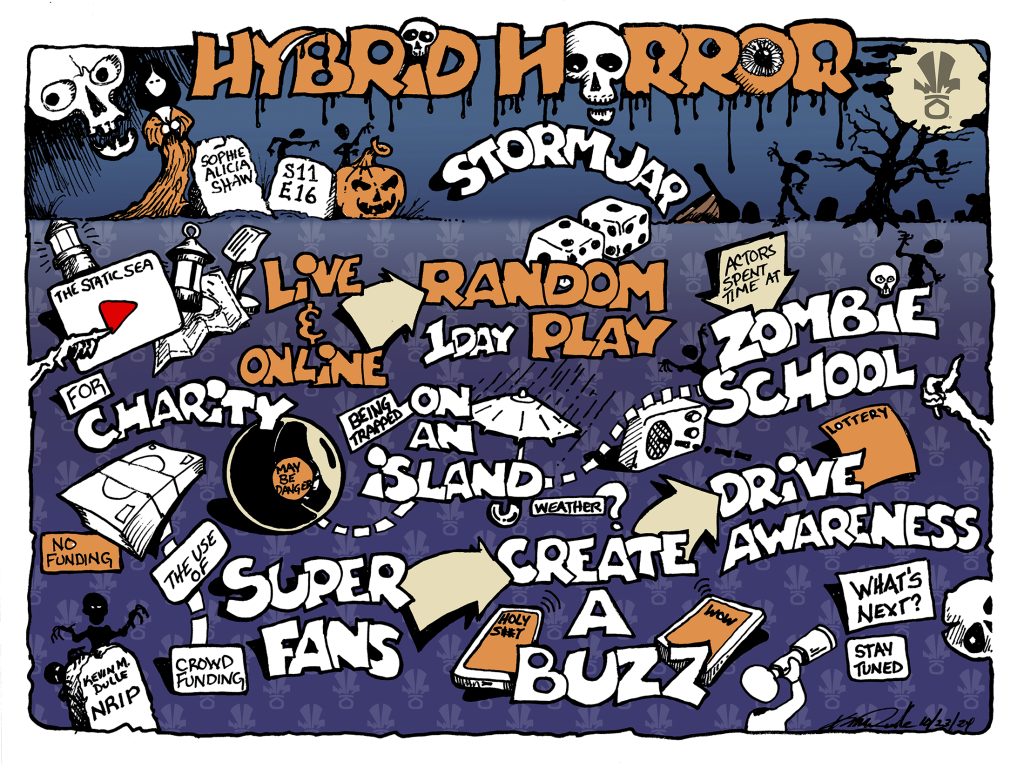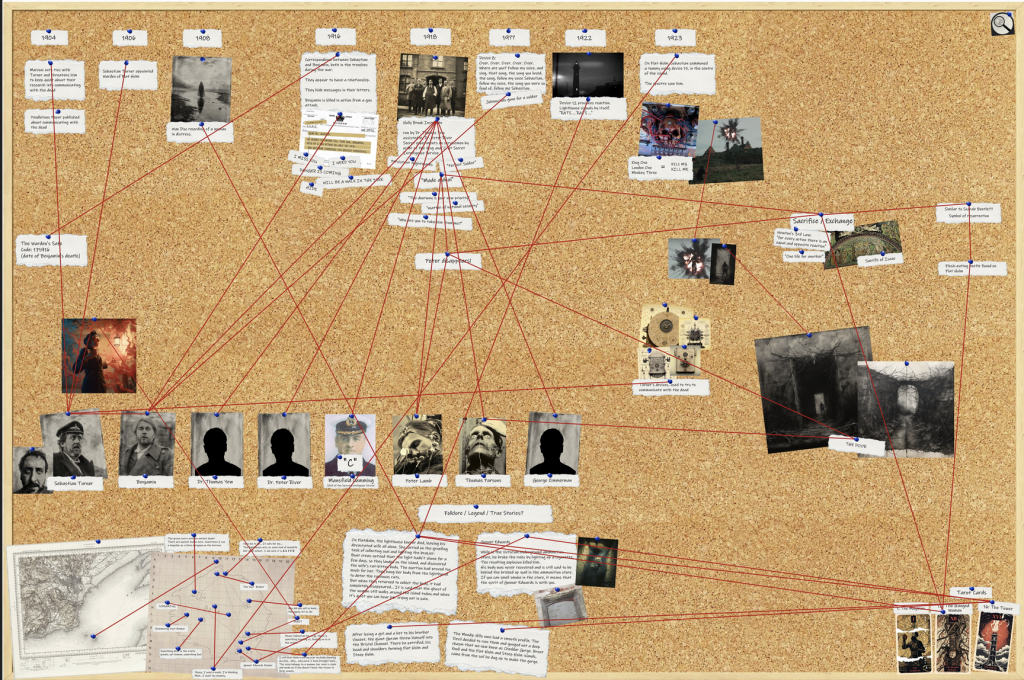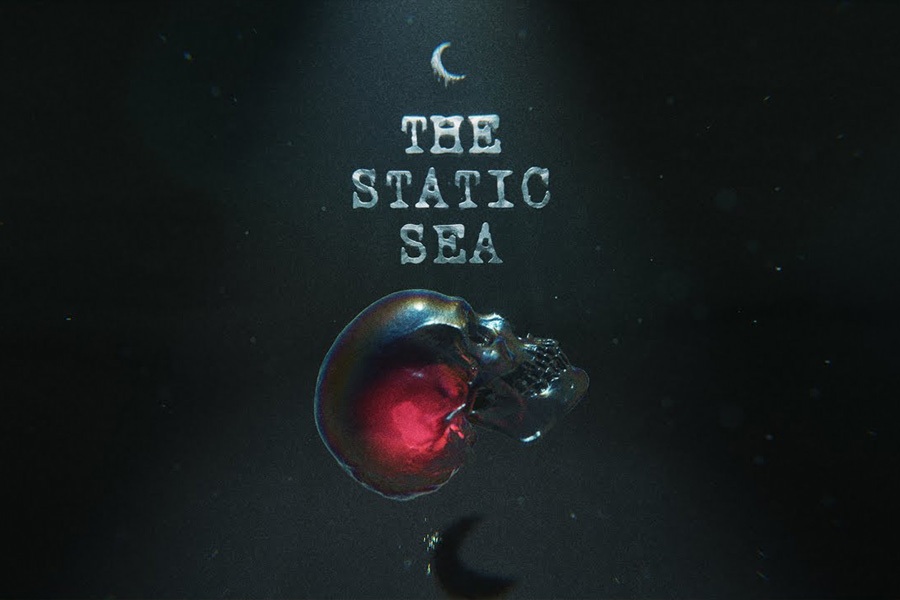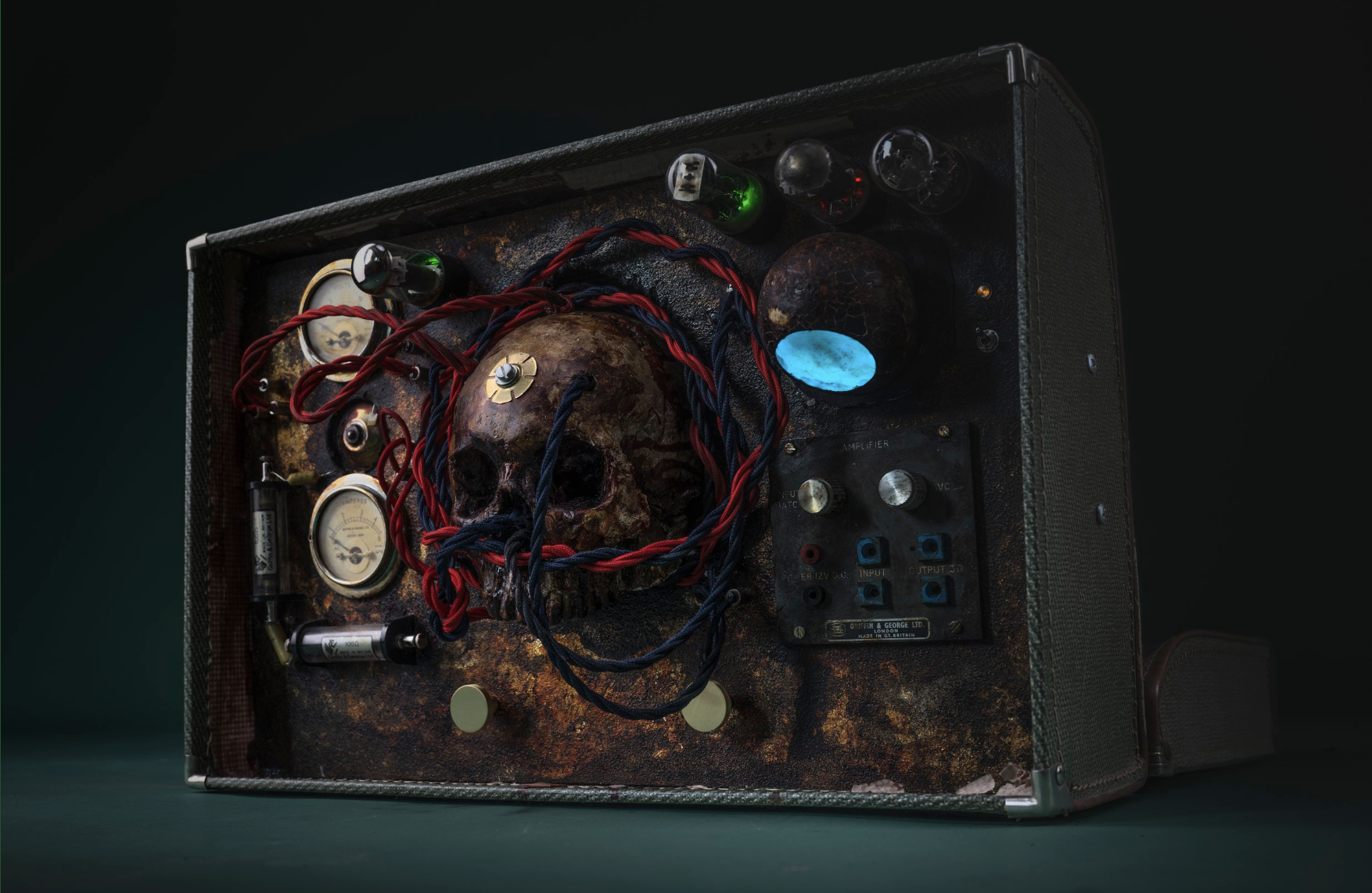When it comes to making people feel immersed and fully present in the moment, fear is one of the most visceral and powerful tools we have.
But for The Static Sea – a horror mystery experience set on an island off the British coast – not only were its creators trying to scare the participants, they also had to feel the fear and do it anyway in order to pull off their ambitions, facing unpredictable conditions, a lack of budget, and the unknown.
Those creators were Stormjar, an experience studio specialising in darker experiences, thrillers and mysteries. Co-founders Sophie-Alicia Shaw and Jim Wheale had previously directed the cross-city zombie chase game 2.8 Hours later across cities in the UK, and Shaw had since worked on projects for Boomtown Festival and Wake The Tiger. However, the duo were still finding their style and had yet to have their first proper production when opportunity came knocking on a boat trip to Flat Holm Island, and a chance encounter with someone from the local council…

Following over a year of planning and plotting, in September 2024 the overnight, hybrid, immersive horror experience The Static Sea finally took place, raising £1000 for the island’s conservation charity and breaking the record for the biggest-ever spend in Wales’ smallest pub. The twisted ghost story combined forgotten queer WW1 history, the birth of radio, and the ghosts of Flat Holm island in a blend of reality and specially created fiction.
It also pioneered new models for Stormjar, using an innovative crowdfunding campaign to raise funds, a £10 ticket lottery to make the 6 spaces accessible to all, and running as a hybrid experience both live on the island and digitally through story broadcasts on Discord. Those on the island had to work together with the online community during the experience to solve the mystery.
In this report you’ll learn not only how Stormjar overcame the challenges and seized the opportunities of this unusual project, but also the value of creating an experience born from inspiration and the impact it can have on your business, beyond just financial success. The Static Sea isn’t only a unique hybrid experience in how it spans physical and digital worlds, but also in how it was an experiment for how we define success.
Feeling The Fear & Doing It Anyway: Saying Yes To Danger
The opportunity to run an immersive experience on Flat Holm island came about when Shaw had a chance meeting with someone from Cardiff Council, who was looking to raise awareness and money for the island’s conservation. Stormjar’s experience running 2.8 Hours Later across a variety of complex and heritage buildings safely meant that they were offered the chance to do something here.
But although Stormjar had some experience of handling these complexities, they still faced lots of challenges. Running an immersive experience on a wild island would be a logistical nightmare. They needed 4 days of good, clear weather in order for the experience to take place, meaning they would have to invest knowing that it could keep getting postponed. Plus they had no money, and very few past productions to lean on. So why say yes?
When it came to the crunch, Stormjar decided to go for it based on the following reasons:
- They knew that they could design the experience between the two of them as they had the knowledge and capability to do so, meaning that they could keep team costs down.
- The island might be a tricky terrain to work with, but it’s also creatively super juicy and filled with loads of history – it has a derelict cholera hospital, plenty of local ghost stories, and was the site for the birth of radio and Marconi’s first broadcast. It also had lots of amazing infrastructure, meaning that they didn’t need to design sets from scratch.
- It was an opportunity to work meaningfully with a charity.
- It has “splash potential”, i.e. the potential to make a real impact, which would otherwise be difficult for a small company to achieve without paying for it.
- It was an opportunity to test out experience prototypes for an actual production in the place it would take place, as opposed to just in a studio.
- It would allow Stormjar to put a stake in the ground by launching their first big production that showed their capabilities.
Ultimately, no risk means no reward – and in Shaw’s words, how often in life are you offered a free island? YOLO!
Creating A Community From Scratch

Stormjar quickly realised that the logistical limitations of the island location meant they would have to think carefully about how many people could be involved, both staff and guests. People and supplies can only arrive via boat and helicopter, and when weather conditions are good. They would have to stay overnight, with limited and basic accommodation. More people would mean more mouths to feed, more boats and helicopters, more chance of getting stranded, and more chance of people getting ill or hurt with limited opportunities to return.
With all this in mind, they decided on bringing 18 cast and crew, 6 audience members, 3 press, and 1 “fake press” person – more on that later. With such small numbers of people actually being involved with the experience, they realised they needed to open it out and build a community another way if they were to have the desired impact of establishing themselves and making a splash.
To get the ball rolling, Stormjar started drip-feeding the backstory online over many weeks so people could start learning about it. They also put in lots of puzzles, which people started working out together and getting involved in the story. From this Stormjar decided to run an online game in parallel with the IRL game on the island via Discord, live and in real time.
Accessible Ticketing: Making The Experience Open To All
In addition to having a digital counterpart to the experience that was free to take part in, Stormjar wanted to make the physical experience open to as many people as possible. However, given that they could only run the experience for one night and for 6 people, they realised that if they were to cover their costs they would have to charge thousands of pounds for each ticket. This exclusive and expensive strategy ran counter to the studio’s values, and also felt wrong for a charity fundraiser.
Instead, they decided to launch a crowdfunding campaign to cover the event costs, with any additional revenue donated to the island’s conservation charity. If people donated £10 to the campaign they were entered into a lottery to win a pair of tickets, with a host of other perks including telegrams, soundtrack downloads, and even naming a ghost available for higher donations. Cardiff Council also agreed to waive fees for accommodation, permits and landing, and to keep costs down Stormjar handled the majority of the production themselves with the help of volunteers.
Shaw admits that pressing the “live” button on the campaign was terrifying. She feared that people didn’t know who they were, or might think the idea was ridiculous. In fact, they hit their goal and even exceeded it, with 250 backers from all over the world in countries including Germany, India, Austria, Canada, the US and Sweden. People wanted to support the idea and feel a part of it, even if they couldn’t take part.
How To Keep Going When You’re Up Against Doubt
The logistics of planning the experience were eye-watering, and took about a year to plan. Some of the challenges Stormjar faced were:
- The location is wild, with rugged terrain, protected wildlife, and no infrastructure for outdoor audio or lighting.
- They had to rely on boats to bring both people and supplies, and only had a small window each day. If the conditions weren’t perfect, they might not arrive, or could even get stranded for as long as 3 weeks!
- They only had one shot to get the experience right: there were no previews to fine tune, so whatever happened, happened.
- There were no luxuries: ancient gas ovens meant feeding people was a pain, and the few bedrooms were draughty and old.
- They needed amazing volunteers not only to pull off the creative production, but also to facilitate island living, cook and clean.
- The experience required a quick setup, with half the volunteers arriving on Thursday and the other half on Friday for a Saturday event.
- Dropouts were expensive and irreplaceable, as there was no-one else on the island to replace them. If the audience or press dropped out, it would be a really expensive place wasted, so they had waiting lists up to an hour before the boats departed.
- The experience relied on emergent gameplay, with audience decisions dictating the ending and variables throughout, making it hard to control.
- They decided to broadcast a live soundtrack, dropping in real-time audio clues, and name drops from ghosts across the island.
- They ran a parallel live online game at the same time as the IRL game, dropping photos, audio and videos based on real-time events.
- They decided to plant a fake audience member – a podcaster for the made-up “Spooky Spaces” – who joined press to get the boat from Cardiff. Once there, they rigged her up with a squib (a fake blood effect) and prayed it wouldn’t go off before she was killed in a gotcha moment when people realise she was a plant.
Inevitably, not everything went exactly according to plan – most notably, the experience was initially slated to run in March 2024 but had to be postponed for 6 months due to the weather. Luckily, the second time round in September there were perfect conditions.
To keep things moving and overcome any doubt, Shaw had to focus on the end goal and believe that they would get there, using a technique she calls “problem crowdsurfing”.
“I told everyone that this will not go smoothly, but we’ll ‘crowdsurf’ problems. We just need the whole show not to break, and the audience not to realise it’s coming. If we all grab a bit of the problem, crowdsurf it over us, and then wait for the next one to come in, before we know it we’ll have got to the end.” Sophie-Alicia Shaw
Giving Back To Volunteers
While Stormjar covered most of the production themselves, The Static Sea might not have happened without the group of volunteers who gave their time to the project. To make sure that they didn’t feel exploited, Stormjar asked for between 3-5 days of their time depending on their involvement, and covered all their expenses including travel to Cardiff.
Some volunteers came out of the Discord channel, having got really involved in the story and helping to create extra bits of backstory, like one memorable character who called themselves “Sherlock Holm”. Some came from nearer, and one came all the way from Austria. Some were very experienced in immersive productions, and some had never done anything like this before.
The testimonials they received from volunteers after the project were amazing and proved that they felt like they had equal creative ownership over it. People also commented that it was a wonderful bonding and learning experience. Having run a “zombie school” for 2.8 Hours Later, this training and learning aspect was important to Shaw, and gives a model for making volunteers feel enriched, not exploited.
Why The Value Of An Experience Goes Beyond Just Money

The business model of immersive makes it really difficult to keep productions running without either having people with deep pockets funding you, or working with a pre-existing IP. The Static Sea didn’t make any money, despite involving a lot of risk, time and energy. But this doesn’t mean that it was a failure.
For Stormjar, the experience has had many more benefits, including:
- It allowed them to test prototypes with audiences, including a device with morse code to play backstory clues.
- It allowed them to create work with their own IP and find their style.
- They grew a passionate community of 250 on Discord from nothing, including a few superfans. People got so deep into the story that they continued playing the online game long after the IRL experience had ended, and there are plans to revive some of the story online soon.
- They increased their mailing list by 300% and got featured on the BBC.
- The project had a meaningful impact for the island’s charity, and gave them a case study of working with heritage sites, as well as lots of amazing photos and videos.
And of course, Stormjar also had a project to feel proud of and to show the world what they can do.
The WXO Take-Out
Of course it’s important to create experiences that are sustainable and make money. But this isn’t the only reason to run an experience – as creative producer Eric Alba says, “you do things for one of the three Rs: the reel, the rate, or the relationship”. The Static Sea is an impressive proof of concept and will undoubtedly pave the way for future projects.
And for everyone involved, it was an inspirational experience that gave them real takeaways, from the guests who experienced the end product to the team and staff who put it together, and even the remote community who funded it. As Shaw says:
“The barriers in the immersive world can be so high, but with the right people, the right idea and a bit of luck, you can make it happen.” Sophie-Alicia Shaw
So next time you’re designing an experience, ask yourself:
- If you could create from a place of pure inspiration, what would you do?
- How could you create a real-world or digital counterpart to your experience to make it hybrid?
- How might you measure the success of your experience beyond just money?
Want to come to live Campfires and join fellow expert experience creators from 39+ different countries as we lead the Experience Revolution forward? Find out how to join us here.





